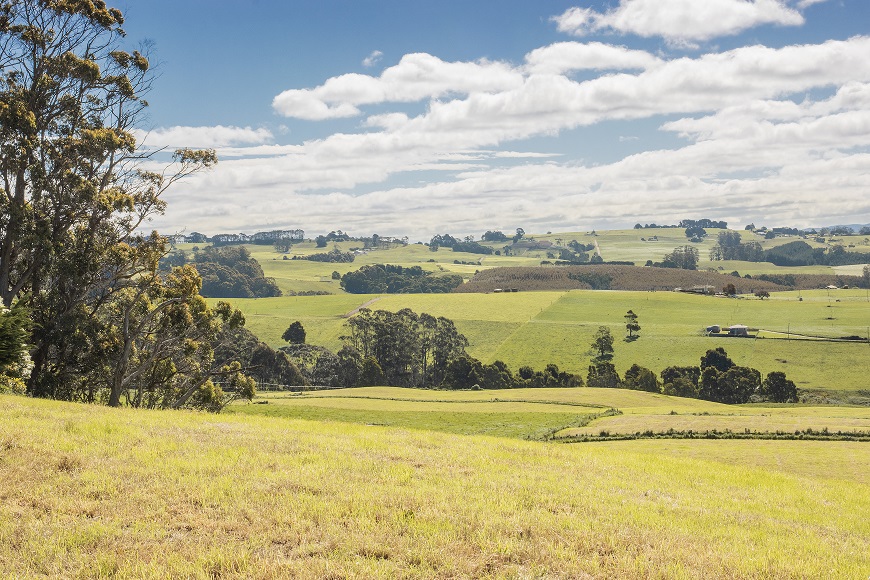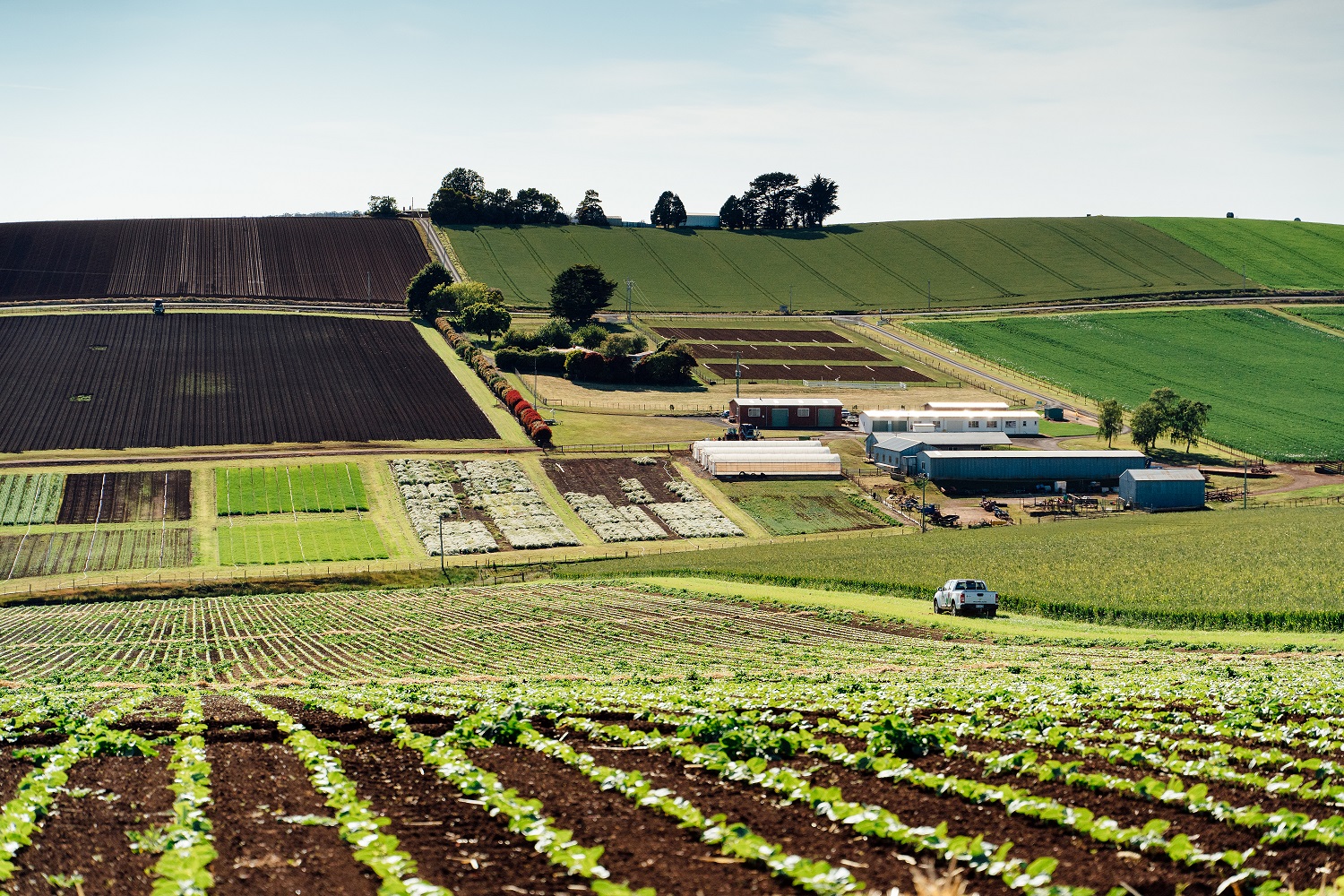Real-time data
Whole farm snapshot
Solving real problems
About our farms
TIA operates a dairy research facility at Nunns Road, Elliott, on Tasmania’s North-West Coast. This is the site of leading research into ways to boost the productivity, profitability and sustainability of Tasmania’s dairy industry.
The facility is used for structured experiments based on a wide range of key industry issues, including feed production, animal performance, analysis of farming systems, grazing management and irrigation.
The farm recently underwent a multi-million-dollar upgrade as part of a $7.8 million joint-investment from the Tasmanian Government and the University of Tasmania to support future success of TIA’s research farms in the North-West, also including the Forthside Vegetable Research Facility. This investment underpins a Region of Excellence for applied agriculture research and demonstration to industry.
The upgrades include a new 50-bay rotary dairy, a new 12.5 megalitre effluent dam, increased irrigation water storage capacity in one of the dams from 24 to 115 megalitres, 11 kilometres of underground irrigation pipeline, and the conversion of 32 hectares of previously unirrigated land for farmlet trials.
Farmlets or ‘mini farms’ have been established with 1 ha paddocks situated over 32 ha. This enables the team to test research hypotheses under real farm conditions and ensure the results provide practical solutions for farmers.
The research conducted at the TIA Dairy Research Facility (TDFRF) leads to tangible productivity and sustainability improvements for Tasmanian dairy farmers. The long-term vision is for TDRF to be somewhere that researchers, students, farmers, and the community can come together to solve real-world problems facing the dairy industry and agriculture more broadly.

This 54-hectare research farm, which is better known as Forthside, is located on Tasmania’s North-West Coast.
Forthside is the site of diverse research trials and teaching that directly contribute to the sustainability and productivity of Tasmania’s agriculture industry.
A recent digital transformation of the farm has seen the implementation of precision agriculture and remote sensing technologies which are creating new opportunities for research, education, and engagement with industry. The upgrades are the result of a $7.8 million joint-investment from the Tasmanian Government and the University of Tasmania to support future success of TIA’s research farms in the North-West, also including the Dairy Research Facility at Elliott.
Approximately six hectares is allocated each year for external users to conduct research at Forthside. One of the benefits of Forthside is the ability to run research trials that cannot be undertaken on commercial properties, including deliberately detrimental treatments that allow researchers to study a crop pathogen, weed management or other experimental treatments that may result in yield penalties.
Forthside is also the base of the Tasmanian Certified Seed Potato Scheme, which provides an independent service to ensure that seed potatoes are grown in accordance with a strict national standard. The scheme helps to ensure that only clean potato seed enters the industry, which helps to control the spread of pests and diseases
A range of Sustainable, Manageable, Accessible Rural Technology (SMART) Farm technologies have been installed at Forthside, creating a demonstration site for farmers to see and interact with new technologies that could be adopted on their own properties.

Smart farm technology
Our Forthside Vegetable Research Facility and Dairy Research Facility at Elliott are equipped with wireless sensors that provide a real-time, whole-of-farm snapshot of growing conditions.
These Sustainable, Manageable, Accessible, Rural Technologies (SMART) demonstrate how on-farm modernisation can support growers to make data-driven decisions.
The SMART farms consist of three components: the sensors, a wireless network to collate and communicate sensor data and a web-based dashboard for visualising the sensor data.
The information can be used to answer questions such as: Is the water trough full? How cold is it? Where is my pivot up to? How moist is the soil? Where are the sheep?
The SMART farms give researchers, students, growers and the community a place and digital infrastructure to work together to solve real-world problems.
Sensors
There are 60 sensors at Elliott and 32 sensors at Forthside that track day to day activities on the farm including soil moisture, weather, animals, pump levels, dam levels and power use. This information is brought together on the smart farm dashboard to make it immediately available where and when a farmer wants it.
Information from the sensor networks allows growers to more effectively time and manage irrigation, manage risks such as frost, drought and unseasonal rainfall, better manage workflow and infrastructure allocation and audit season performance of different enterprises.
- Drinking Trough x 4
- Tank level x 2
- Flow monitoring x 6
- Flow meter x 4
- Dam level x 1
- Pump power use x 2
- Weather x 2 (Two weather stations (Environdata and ICT) including temperature, humidity, leaf wetness, windspeed, rainfall, solar radiation, calculation of ETo)
- Equipment tracking GPS x 12,
- Cow tracking x 12
- Soil Moisture x6
- Milk Monitoring x 1
- Dam level x2
- Weather station x2 (FarmPulse & ICT stations: including temperature, humidity, leaf wetness, windspeed, rainfall, solar radiation, calculation of ETo, dew point)
- Equipment tracking GPS x 4
- Pump Power use x2
- Pump Flow x2
- Tank level x1
- Dam level x2
- Soil moisture x18
Request public dashboard access
- Elliott
- Forthside
The Smart Farm dashboards are enabled by FarmPulse.
Request UTAS staff and student dashboard access
- Elliott
- Forthside
The Smart Farm dashboards are enabled by FarmPulse.
Smart farm stories
Want to know more?
Contact TIA Ag Tech Lead, Dr Marcus Hardie, Marcus.Hardie@utas.edu.au